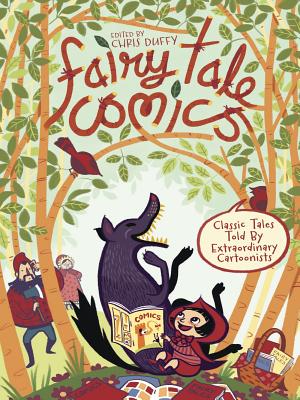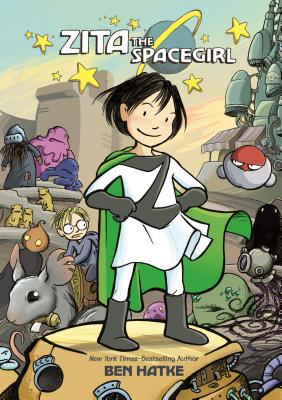I've always had mixed feelings about homework, but over the last few years I've gotten into a workable groove. In fact, reading homework has solved some thorny problems in my classroom.
For several years, I didn't give any reading homework at all. But parents actually asked me for something more. "I can say to go and read as much as I like, but when you give homework, he takes it seriously," a parent told me. I heard the same kinds of comments over the next few years--that many students liked a homework routine, and enjoyed doing something that connected home and school. As my own children started school, I started to see value in a meaningful, well-planned homework routine.
So I created a weekly homework assignment for students. I thought, "What do I want this to be?" and made a set of materials that combine fluency, comprehension, and vocabulary with engaging reading selections. At first I scrounged in best reading-teacher fashion to find texts from a variety of sources. This works in the short-term, but it was hard to find enough texts to be a long-term solution. So I commissioned myself to write my own. (The author side of me: "What? Four texts per month for nine months? That is 36 texts!" The teacher side of me: "Yup. Get writing.")
As I created the homework assignments, these were my guiding questions.
Does the homework provide some element of choice?
I love having choices! On my homework assignment, I make a table of nine options for independent reading each week. Kids could just read in their independent reading book each night, but there are also possibilities for writing, reading picture books aloud, or researching topics. (Kids especially love the "Follow directions to make something" option--some hit the recipe books and spend time cooking in the kitchen!)
Is there flexibility for varied schedules?
I strongly believe that fourth graders shouldn't have more than 1 hour of homework per night (if that). I structure the reading assignment so that kids can do it over several nights. I find a Monday-Monday routine to be very family-friendly.
Can students do the assignment with a minimum of support?
Several years ago I received an email from a parent of a student several states away. This child had homework that was so taxing that the parent was emailing an unknown teacher (me) for help! I certainly don't want to put anyone in this situation, so I try to make the assignments straightforward. While individual questions may be difficult for students, I make it clear that it's no big deal--just do your best!
Of course I never grade homework.
Can I provide effective support for students in the classroom?
While many of the parents of students are wonderfully supportive, there are some students who get little home support.
If this homework is worth doing, then I need to make sure that everyone does it--even those students who don't get homework done at home. I use arrival time, dismissal time, and other odd moments in the day to help students who have trouble completing assignments. Sometimes it's as simple as asking a sixth grade tutor to come and help a student each afternoon. For other students, I make sure that I listen in and offer support.
When an extra adult has time to volunteer in the classroom, helping students with the weekly packet is a perfect activity. It requires very little explanation from me and the kids are thrilled to get some more individual attention.
Often, working on reading homework is offered as a choice during quiet moments or when other activities are finished. Some students take advantage of this and choose to work on the homework with other students in the room, turning it into a social reading activity--which is great! I do have some students who like to do the work at home--"My mom does it with at night" or "I think my dad will like this text, so I'm going to read it to him."
Is this homework part of classroom instruction?
I think every teacher has assigned homework that then gets put aside, never to see the light of day. But this should be a rare occurrence! I've decided to dedicate Mondays to working with the homework texts, both in discussing last week's work and introducing a new passage.
This is a big time commitment, but I feel that it is worthwhile. Remember how I said that the homework solves a problem? In my case, the problem is the expository/narrative/drama/poetry problem. We might be studying narratives for two months, but I still want students to be exposed to other kinds of text. With the weekly passages, we can take little side trips to other kinds of text even while in the middle of a bigger unit. Kids especially enjoy the procedural passages...the "
Fairy Bread" passage was listed as one of the highlights that students remembered at the end of the year.
I'm amazed at how often connections come up between homework passages and what we happen to be studying in class each week. At first I thought, "Oh! Lucky coincidence!", but now I know that there are connections
everywhere. My weekly packets include five vocabulary words, many from my
master word list. These words really pop up all around us!
A thoughtful plan
Whatever you decide to do with homework, it's important to consider your school and your community. What can you handle? What can your students handle? By thinking about these questions, and the questions above, you can create a homework routine that works well for everyone.
The packets
Several users are saying that they use them for small group instruction instead of homework--a great idea! Writing 36 unique texts that didn't all sound the same was quite a challenge, but was very rewarding throughout the year.
September Reading Homework
My favorite part of this packet is the procedural text--caramel apple floats are totally delicious! Also included is a folktale, an informational text, and a persuasive text. These are so helpful for introducing different kinds of text early in the year.
October Reading Homework
In October, I added the weekly open-ended responses to our routine. This was so important! This month's texts include an informational text about pumpkins, a narrative, an interview with a woolly bear caterpillar, and a text explaining idioms, adages, and puns. Can you guess which one the students liked best?
November Reading Homework
November includes an informational text about Veterans Day, two fables, and a text about Pilgrims. The fables were fun to read and discuss with students.
December Reading Homework
In December, I added "Focus on Complex Text"--an additional lesson to go along with each passage. Students were fascinated by the text about Pearl Harbor, and also liked the script.
January Reading Homework
This packet includes a poem, a procedural text about fairy bread, and two informational passages. Of course the fairy bread was the biggest hit from this month!
February Reading Homework
"Can we learn more about Greek myths?" was the question in my classroom, so I wrote "Theseus and the Minotaur" for them. (Wow, that is a tough myth to tell in one page and keep appropriate for elementary students!)
March Reading Homework
By March I had spring on the mind! The two frog poems in this packet were perfect to introduce our spring peeper investigation. Students also enjoyed debating the merits of Daylight Savings Time and learning about the vernal equinox.
April Reading Homework
At some point I learned that many of my students were not familiar with great blue herons, which are common in our area. I used the interview format to write about great blue herons for this month's texts. Also included is an informational text, a poem, and an introduction to persuasive text.
May Reading Homework
"We want more food texts!" the students said, so I wrote "Some More S'mores, Please!" and then we made the indoor s'mores in the classroom. How awesome! Later, while we read "Androcles and the Lion", we acted it out in class. Again, and again, and again, with different students taking different roles.
Paperless homework?
Several of these assignments are available on
Frolyc as well! Keep checking as I'll be adding more over the next few weeks. If students have iPads at home, they can read the texts and do some of the activities on the iPad. Of course, these texts would also work for in-class instruction with school iPads.
-
Adages, Idioms, and Puns (November)
-
Daylight Savings Time (March)
-
Happy Australia Day! (January)
-
Remember Pearl Harbor (December) Note: This includes some more challenging questions than the paper homework activity, so it is listed as a grade 6. I have so much trouble pinning things down to a grade level because it really depends on the level of support that readers will get and the background knowledge they have!









